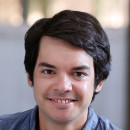What led you to TSE?
I completed my PhD at the University of Chicago after a master’s degree at ESSEC Business School and the University of Cergy. I’m glad to arrive at TSE as there is a great faculty here. I am particularly excited to collaborate with Mohamed Saleh, who is a fellow economic historian.
What can you tell us about culture?
Measuring culture is very complicated, especially when we consider how culture emerges and changes over time. One of my research projects, together with Estefania Santacreu-Vasut (ESSEC) and Daniel Hicks (Oklahoma), focuses on whether language, and specifically, the pervasiveness of gender distinctions in grammar, helps to explain variations in women’s economic behavior across cultural origins. Our intuition is that language structures reflect deep cultural differences. Our results highlight that women speaking more gendered language are less likely to work. In other words, language might be a marker of culture. Our current research explores how and why these structures emerged in the first place, and how they might reflect social structures of pre-modern societies.
You also worked on the effects of the First World War?
The Great War was an extreme period for Europe and especially for France, during which more than 1.3 million French soldiers died. To capture the intensity of the war at the local level, I collected individual military records of all French soldiers who died. In ‘The Missing Men’, I show that areas in which more men died during the war experienced an inflow of women in the labor force after the war. Many of these women could not find a suitable husband and thus had to work to support their families. Similarly, war widows had to start working because subsidies were very low, at least until the early 1930s.
How is this linked with culture?
This historical episode provides the opportunity to improve our understanding of the process of cultural change. In ‘The Legacy of the Missing Men’, I argue that women induced to enter the labor force after the war altered the preferences and beliefs about female labor of their daughters, sons, and entourage, and that these changes translated into the working behavior of women in subsequent generations. Consistent with this idea, I find that the impact of the First World War is still present today. For instance, a woman whose grandmother or great-grandmother worked because of the war is more likely to work today and to hold more progressive views about gender roles. We also witness a similar impact on attitudes, although lower, for men whose grandmother or great-grandmother became active following the war.
What are your future projects?
I am currently interested in finding innovative ways of measuring people’s beliefs across history. For instance, I am collecting information on the legislative behavior of representatives in the French National Assembly throughout the 20th century, with the goal of capturing their beliefs about gender roles. I am also starting a research project to explore the role of early nation-states and institutions for long-run economic growth.
Extract of the TSE Mag#18 Winter 2018


Add new comment